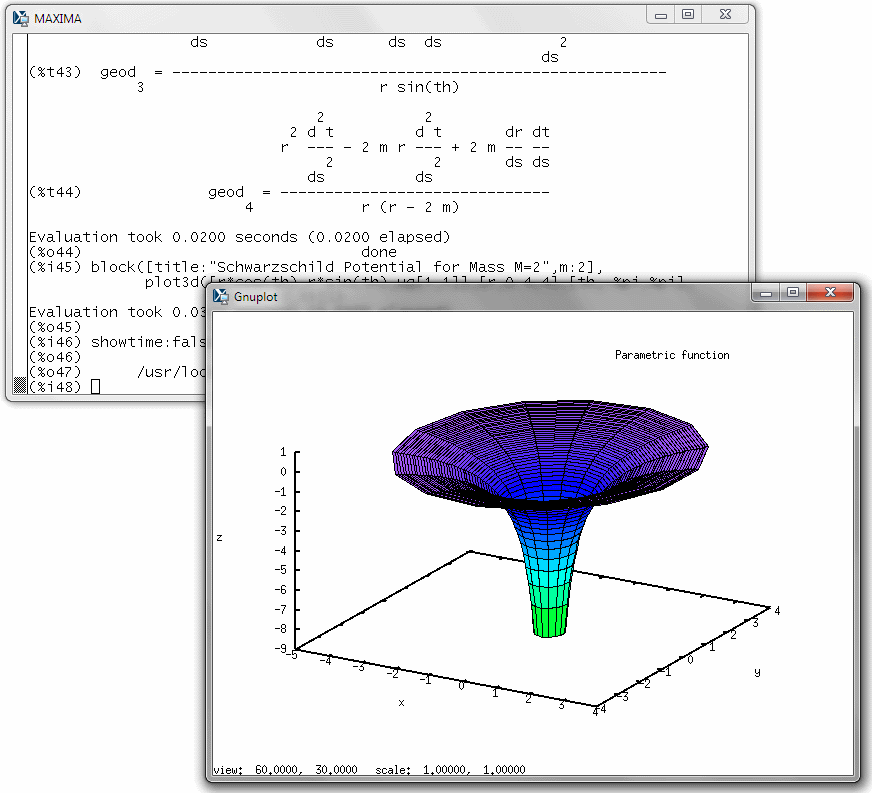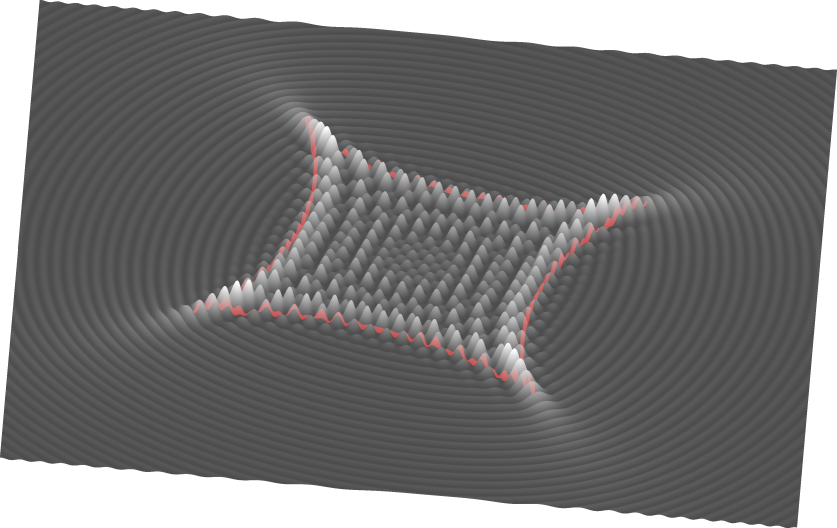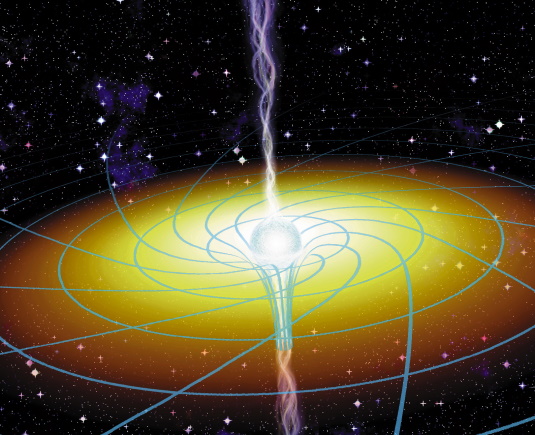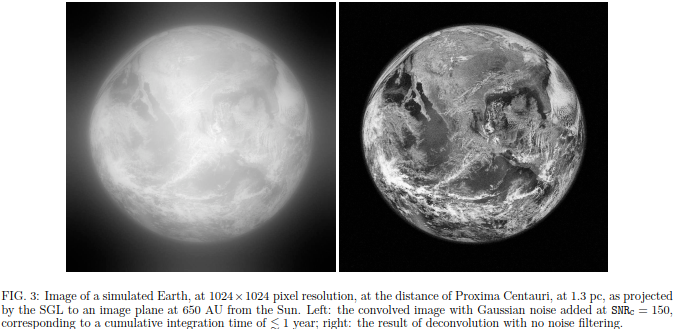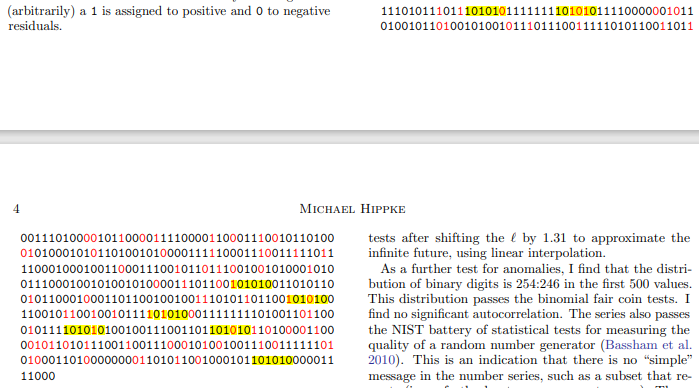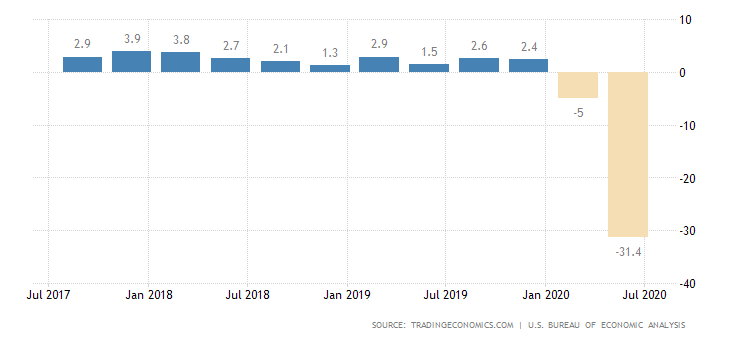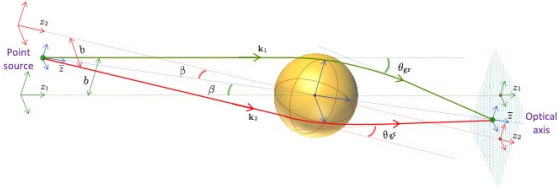We just released another beautiful new version of Maxima, 5.45.0. This time around, it also includes changes (for the first time in years) to the tensor packages, based on a very comprehensive set of proposed patches by a devoted Maxima user.
We have a new manuscript on arXiv. Its title might raise some eyebrows: Algebraic wave-optical description of a quadrupole gravitational lens.
Say what? Algebra? Wave optics? Yes. It means that in this particular case, namely a gravitational lens that is described as a gravitational monopole with a quadrupole correction, we were able to find a closed form description that does not rely on numerical integration, especially no numerical integration of a rapidly oscillating function.
Key to this solution is a quartic equation. Quartic equations were first solved algebraically back in the 16th century by Italian mathematicians. The formal solution is usually considered to be of little practical value, as it entails cumbersome algebra, and polynomial equations can be routinely and efficiently solved using numerical methods.
But in this case… The amazing thing is that the algebraic solution reveals so much about the physics itself!
Take this figure from our paper, for instance:
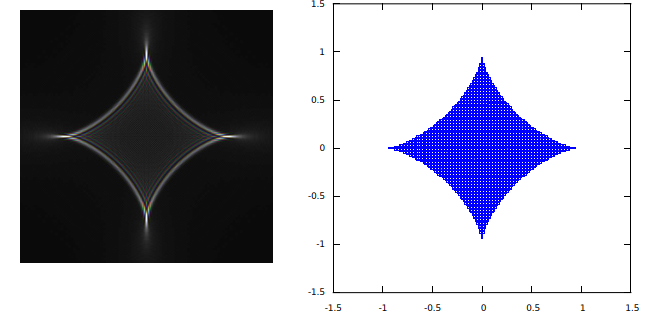
On the left is light projected by the gravitational lens, its so-called point-spread function (PSF) which tells us how light from a point source is distributed on an imaginary projection screen by the lens. On the right? Why, that’s the discriminant of the quartic equation
$$ x^4-2\eta\sin\mu \, x^3+\big(\eta^2-1\big)x^2+\eta\sin\mu \, x+{\textstyle\frac{1}{4}}\sin^2\mu=0, $$
in a plane characterized by polar coordinates \((\eta,\tfrac{1}{2}\mu)\), that is, \(\eta\) as a radial coordinate and \(\tfrac{1}{2}\mu \) as an azimuthal angle. When the discriminant is positive, the equation is expected to have four real (or four complex) roots; everywhere else, it’s a mix of real and imaginary roots. This direct connection between the algebra and the lensing phenomenon is unexpected and beautiful.
The full set of real roots of this equation can be shown in the form of an animation:
Of course one must read the paper in order for this animation to make sense, but I think it’s beautiful.
How good is this quartic solution? It is uncannily accurate. Here is a comparison of the PSF computed using the quartic solution and also using numerical integration, as well as some enlarged details from the so-called caustic boundary:
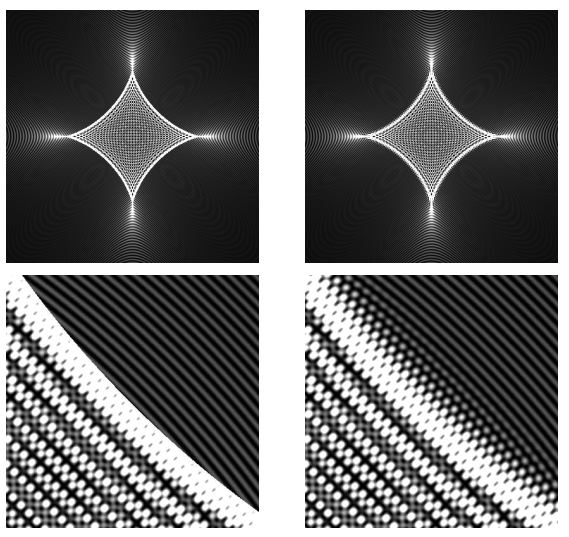
It’s only in the immediate vicinity of the caustic boundary that the quartic solution becomes less than accurate.
We can also use the quartic solution to simulate images seen through a telescope (i.e., the Einstein ring, or what survives of it, that would appear around a gravitational lens when we looked at the lens through a telescope with a point source of light situated behind the lens.) We can see again that it’s only in the vicinity of the caustic boundary that the quartic solution produces artifacts instead of accurately reproducing it when spots of light widen into arcs:

This paper was so much joy to write! Also, for the first time in my life, this paper gave us a legitimate, non-pretentious reason to cite something from the 16th century: Cardano’s 1545 treatise in which the quartic solution (as well as the cubic) are introduced, together with discussion on the meaning of taking the square root of negative numbers.
Last fall, I received an intriguing request: I was asked to respond to an article on the topic of dark matter in an online publication that, I admit, I never heard of previously: Inference: International Review of Science.
But when I looked, I saw that the article in question was written by a scientist with impressive and impeccable credentials (Jean-Pierre Luminet, Director of Research at the CNRS Astrophysics Laboratory in Marseille and the Paris Observatory), and other contributors of the magazine included well-known personalities like Lawrence Krauss or Noam Chomsky.
More importantly, the article in question presented an opportunity to write a response that was not critical but constructive: inform the reader that the concept of modified gravity goes far beyond the so-called MOND paradigm, that it is a rich and vibrant field of theoretical research, and that until and unless dark matter is actually discovered, it remains a worthy pursuit. My goal was not self-promotion: I did not even mention my ongoing collaboration with John Moffat on his modified theory of gravity, MOG/STVG. Rather, it was simply to help dispel the prevailing myth that failures of MOND automatically translate into failures of all efforts to create a viable modified theory of gravitation.
I sent my reply and promptly forgot all about it until last month, when I received another e-mail from this publication: a thank you note letting me know that my reply would be published in the upcoming issue.
And indeed it was, as I was just informed earlier today: My Letter to the Editor, On Modified Gravity.
I am glad in particular that it was so well received by the author of the original article on dark matter.
This morning, a drone took flight. It successfully took off from the ground, hovered for a few seconds, and then landed safely.
What, you ask? How is this supposed to be a big deal? There are millions of drones out there, kids playing with them and whatnot.
Oh, but this drone is special, and not only because it carries a small piece of fabric from the Wright brothers’ very first airplane.
It is special because it flew on Mars.
Bald eagles have a fearsome reputation as predators of the sky. They also symbolize the great United States of America.
Canada geese? Not so fearsome. They are best known for pooping a lot. (If you ever walked through an Ottawa park after it was visited by a flock of geese, you know what I am talking about.)
Yet just like the country that they are named after, these geese are not so timid after all. Here is a recent series of images (and if you search online, you see that this by no means is an exception) captured by a PEI photographer of a Canada goose, fighting off a bald eagle:
Reader’s Digest version: The eagle remained hungry that day.
The next in our series of papers describing the extended gravitational lens (extended, that is, in that we are no longer treating the lensing object as a gravitational monopole) is now out, on arXiv.
Here’s one of my favorite images from the paper, which superimposes the boundary of the quadrupole caustic (an astroid curve) onto a 3D plot showing the amplitude of the gravitational lens’s point-spread function.
I was having lots of fun working on this paper. It was, needless to say, a lot of work.
I am reading about Heino Falcke.
Dr. Falcke is a scientist. He is the leader of the Event Horizon Telescope project, the first successful attempt to image the event horizon (actually, the shadow of the photon sphere cast on the accretion disk background) of a black hole.
Dr. Falcke also happens to be religious. A lay pastor, no less, in the Protestant Church in the Netherlands.
He represents yet another example of how faith and the sciences need not be in conflict.
I happen to be nonreligious. I even mock religion (not the religious! Never!) occasionally when I talk about “imaginary friends”, “sky daddy” or the “Flying Spaghetti Monster”. My mockery is not intended to hurt: rather, this truly is how I feel about these supernatural concepts, as surreal, outlandish flights of fancy, fairy tales, nothing more.
Yet I think I understand how faith can also give strength to people. Offer motivation. Fill their lives with meaning.
It has been invariably my experience that the company of a person of faith who is open-minded and capable of critical thinking is much preferable to that of a dogmatic atheist.
In any case, while I may not have much respect for the supernatural aspects of religion, I certainly take no issue with the basic tenets of Christianity, such as loving thy neighbor or not committing murder. If the core message of religion is to try to be a decent human being, well, I don’t need to believe in imaginary friends to accept and fully embrace these principles.
This always reminds me how the best description of Christianity I ever came across came from a devoted atheist, the late Douglas Adams (of Hitchhiker’s Guide to the Galaxy fame): “And then, one Thursday, nearly two thousand years after one man had been nailed to a tree for saying how great it would be to be nice to people for a change […]”
Because I’ve been asked a lot about this lately, I thought I’d also share my own take on this calculation in my blog.
Gravitoelectromagnetism (or gravitomagnetism, even gravimagnetism) is the name given to a formalism that shows how weak gravitational fields can be viewed as analogous to electromagnetic fields and how, in particular, the motion of a test particle is governed by equations that are similar to the equations of the electromagnetic Lorentz-force, with gravitational equivalents of the electric and magnetic vector potentials.
Bottom line: no, gravitoelectromagnetism does not explain the anomalous rotation curves of spiral galaxies. The effect is several orders of magnitude too small. Nor is the concept saved by the realization that spacetime is not asymptotically flat, so the boundary conditions must change. That effect, too, is much too small, at least five orders of magnitude too small in fact to be noticeable.
To sketch the key details, the radial acceleration on a test particle due to gravitoelectromagnetism in circular orbit around a spinning body is given roughly by
$$a=-\frac{4G}{c^2}\frac{Jv}{r^3},$$
where \(r\) is the orbital speed of the test particle. When we plug in the numbers for the solar system and the Milky Way, \(r\sim 8~{\rm kpc}\) and \(J\sim 10^{67}~{\rm J}\cdot{\rm s}\), we get
$$a\sim 4\times 10^{-16}~{\rm m}{\rm s}^2.$$
This is roughly 400,000 times smaller than the centrifugal acceleration of the solar system in its orbit around the Milky Way, which is \(\sim 1.6\times 10^{-10}~{\rm m}/{\rm s}^2.\)
Taking into account that our universe is not flat, i.e., deviations from the flat spacetime metric approach unity at the comoving distance of \(\sim 15~{\rm Gpc},\) only introduces a similarly small contribution on the scale of a galaxy, of \({\cal O}(10^{-6})\) at \(\sim 15~{\rm kpc}.\)
A more detailed version of this calculation is available on my Web site.
Now it is time for me to be bold and contrarian. And for a change, write about physics in my blog.
From time to time, even noted physicists express their opinion in public that we do not understand quantum physics. In the professional literature, they write about the “measurement problem”; in public, they continue to muse about the meaning of measurement, whether or not consciousness is involved, and the rest of this debate that continues unabated for more than a century already.
Whether it is my arrogance or ignorance, however, when I read such stuff, I beg to differ. I feel like the alien Narim in the television series Stargate SG-1 in a conversation with Captain (and astrophysicist) Samantha Carter about the name of a cat:
CARTER: Uh, see, there was an Earth physicist by the name of Erwin Schrödinger. He had this theoretical experiment. Put a cat in a box, add a can of poison gas, activated by the decay of a radioactive atom, and close the box.
NARIM: Sounds like a cruel man.
CARTER: It was just a theory. He never really did it. He said that if he did do it at any one instant, the cat would be both dead and alive at the same time.
NARIM: Ah! Kulivrian physics. An atom state is indeterminate until measured by an outside observer.
CARTER: We call it quantum physics. You know the theory?
NARIM: Yeah, I’ve studied it… in among other misconceptions of elementary science.
CARTER: Misconception? You telling me that you guys have licked quantum physics?
What I mean is… Yes, in 2021, we “licked” quantum physics. Things that were mysterious in the middle of the 20th century aren’t (or at least, shouldn’t be) quite as mysterious in the third decade of the 21st century.
OK, let me explain by comparing two thought experiments: Schrödinger’s cat vs. the famous two-slit experiment.
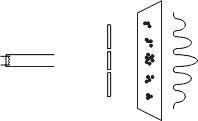
The two-slit experiment first. An electron is fired by a cathode. It encounters a screen with two slits. Past that screen, it hits a fluorescent screen where the location of its arrival is recorded. Even if we fire one electron at a time, the arrival locations, seemingly random, will form a wave-like interference pattern. The explanation offered by quantum physics is that en route, the electron had no classically determined position (no position eigenstate, as physicists would say). Its position was a combination, a so-called superposition of many possible position states, so it really did go through both slits at the same time. En route, its position operator interfered with itself, resulting in the pattern of probabilities that was then mapped by the recorded arrival locations on the fluorescent screen.

Now on to the cat: We place that poor feline into a box together with a radioactive atom and an apparatus that breaks a vial of poison gas if the atom undergoes fission. We wait until the half-life of that atom, making it a 50-50 chance that fission has occurred. At this point, the atom is in a superposition of intact vs. split, and therefore, the story goes, the cat will also be in a superposition of being dead and alive. Only by opening the box and looking inside do we “collapse the wavefunction”, determining the actual state of the cat.
Can you spot a crucial difference between these two experiments, though? Let me explain.
In the first experiment involving electrons, knowledge of the final position (where the electron arrives on the screen) does not allow us to reconstruct the classical path that the electron took. It had no classical path. It really was in a superposition of many possible locations while en route.
In the second experiment involving the cat, knowledge of its final state does permit us to reconstruct its prior state. If the cat is alive, we have no doubt that it was alive all along. If it is dead, an experienced veterinarian could determine the moment of death. (Or just leave a video camera and a clock in the box along with the cat.) The cat did have a classical state all throughout the experiment, we just didn’t know what it was until we opened the box and observed its state.
The crucial difference, then, is summed up thus: Ignorance of a classical state is not the same as the absence of a classical state. Whereas in the second experiment, we are simply ignorant of the cat’s state, in the first experiment, the electron has no classical state of position at all.
These two thought experiments, I think, tell us everything we need to know about this so-called “measurement problem”. No, it does not involve consciousness. No, it does not require any “act of observation”. And most importantly, it does not involve any collapse of the wavefunction when you really think it through. More about that later.
What we call measurement is simply interaction by the quantum system with a classical object. Of course we know that nothing really is classical. Fluorescent screens, video cameras, cats, humans are all made of a very large but finite number of quantum particles. But for all practical (measurable, observable) intents and purposes all these things are classical. That is to say, these things are (my expression) almost in an eigenstate almost all the time. Emphasis on “almost”: it is as near to certainty as you can possibly imagine, deviating from certainty only after the hundredth, the thousandth, the trillionth or whichever decimal digit.
Interacting with a classical object confines the quantum system to an eigenstate. Now this is where things really get tricky and old school at the same time. To explain, I must invoke a principle from classical, Lagrangian physics: the principle of least action. Almost all of physics (including classical mechanics, electrodynamics, even general relativity) can be derived from a so-called action principle, the idea that the system evolves from a known initial state to a known final state in a manner such that a number that characterizes the system (its “action”) is minimal.
The action principle sounds counterintuitive to many students of physics when they first encounter it, as it presupposes knowledge of the final state. But this really is simple math if you are familiar with second-order differential equations. A unique solution to such an equation can be specified in two ways. Either we specify the value of the unknown function at two different points, or we specify the value of the unknown function and its first derivative at one point. The former corresponds to Lagrangian physics; the latter, to Hamiltonian physics.
This works well in the context of classical physics. Even though we develop the equations of motion using Lagrangian physics, we do so only in principle. Then we switch over to Hamiltonian physics. Using observed values of the unknown function and its first derivative (think of these as positions and velocities) we solve the equations of motion, predicting the future state of the system.
This approach hits a snag when it comes to quantum physics: the nature of the unknown function is such that its value and its first derivative cannot both be determined as ordinary numbers at the same time. So while Lagrangian physics still works well in the quantum realm, Hamiltonian physics does not. But Lagrangian physics implies knowledge of the future, final state. This is what we mean when we pronounce that quantum physics is fundamentally nonlocal.
Oh, did I just say that Hamiltonian physics doesn’t work in the quantum realm? But then why is it that every quantum physics textbook begins, pretty much, with the Hamiltonian? Schrödinger’s famous equation, for starters, is just the quantum version of that Hamiltonian!
Aha! This is where the culprit is. With the Hamiltonian approach, we begin with presumed knowledge of initial positions and velocities (values and first derivatives of the unknown functions). Knowledge we do not have. So we evolve the system using incomplete knowledge. Then, when it comes to the measurement, we invoke our deus ex machina. Like a bad birthday party surprise, we open the magic box, pull out our “measurement apparatus” (which we pretended to not even know about up until this moment), confine the quantum system to a specific measurement value, retroactively rewrite the description of our system with the apparatus now present all along, and call this discontinuous change in the system’s description “wavefunction collapse”.
And then spend a century about its various interpretations instead of recognizing that the presumed collapse was never a physical process: rather, it amounts to us changing how we describe the system.
This is the nonsense for which I have no use, even if it makes me sound both arrogant and ignorant at the same time.
To offer a bit of a technical background to support the above (see my Web site for additional technical details): A quantum theory can be constructed starting with classical physics in a surprisingly straightforward manner. We start with the Hamiltonian (I know!), written in the following generic form:
$$H = \frac{p^2}{2m} + V({\bf q}),$$
where \({\bf p}\) are generalized momenta, \({\bf q}\) are generalized positions and \(m\) is mass.
We multiply this equation by the unit complex number \(\psi=e^{i({\bf p}\cdot{\bf q}-Ht)/\hbar}.\) We are allowed to do this trivial bit of algebra with impunity, as this factor is never zero.
Next, we notice the identities, \({\bf p}\psi=-i\hbar\nabla\psi,\) \(H\psi=i\hbar\partial_t\psi.\) Using these identities, we rewrite the equation as
$$i\hbar\partial_t\psi=\left[-\frac{\hbar^2}{2m}\nabla^2+V({\bf q})\right]\psi.$$
There you have it, the time-dependent Schrödinger equation in its full glory. Or… not quite, not yet. It is formally Schrödinger’s equation but the function \(\psi\) is not some unknown function; we constructed it from the positions and momenta. But here is the thing: If two functions, \(\psi_1\) and \(\psi_2,\) are solutions of this equation, then because the equation is linear and homogeneous in \(\psi,\) their linear combinations are also solutions. But these linear combinations make no sense in classical physics: they represent states of the system that are superpositions of classical states (i.e., the electron is now in two or more places at the same time.)
Quantum physics begins when we accept these superpositions as valid descriptions of a physical system (as indeed we must, because this is what experiment and observation dictates.)
The presence of a classical apparatus with which the system interacts at some future moment in time is not well captured by the Hamiltonian formalism. But the Lagrangian formalism makes it clear: it selects only those states of the system that are consistent with that interaction. This means indeed that a full quantum mechanical description of the system requires knowledge of the future. The apparent paradox is that this knowledge of the future does not causally influence the past, because the actual evolution of the system remains causal at all times: only the initial description of the system needs to be nonlocal in the same sense in which 19th century Lagrangian physics is nonlocal.
I really cannot tell which impresses me more: The incredibly complex landing or the fact that there is now a de facto infrastructure in orbit around Mars, in the form of earlier spacecraft that provide communications relay capabilities for real-time tracking of the landing.
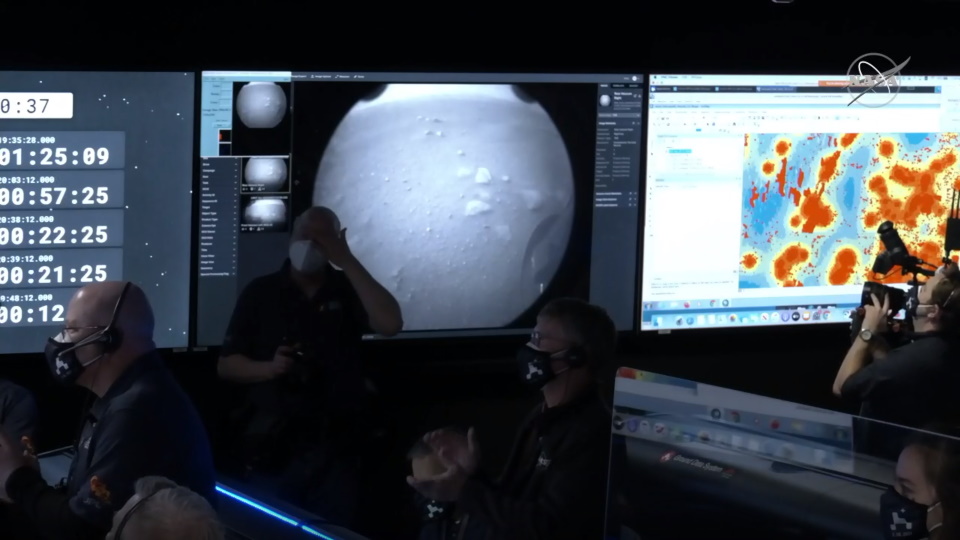
Or perhaps the fact that Perseverance also carries the Ingenuity helicopter. If successful, it will be the first drone to fly in the atmosphere of another planet.
The children of future settlers on Mars will be learning about these moments in school.
A Dallas-Fort Worth TV station characterized Texas as the energy capital of the world as it asked the rhetorical question: How could this happen?
I have friends in Texas. One of them e-mailed me to let me know that they’ve been without power since 5 AM this morning.
Unlike the US-Canadian northeast with its interconnected power grid, Texas has its own power grid. This means, I understand, that they cannot rely on excess generating capacity in neighboring states to help with the crisis.
And the weather is bitterly cold, much colder than up here in wintry Ottawa. Right now, according to that Dallas-Fort Worth TV station it’s 8 degrees Fahrenheit but it will drop to several degrees below zero on the Fahrenheit scale overnight; that’s -20 C for us folks in metric lands.
This is not a joke. In weather like this, people can die, especially in ill-insulated homes as they struggle with unexpected secondary disasters such as bursting, frozen pipes that may very well happen.
Sometimes, simple programming mistakes make for interesting glitches.
Take this image:
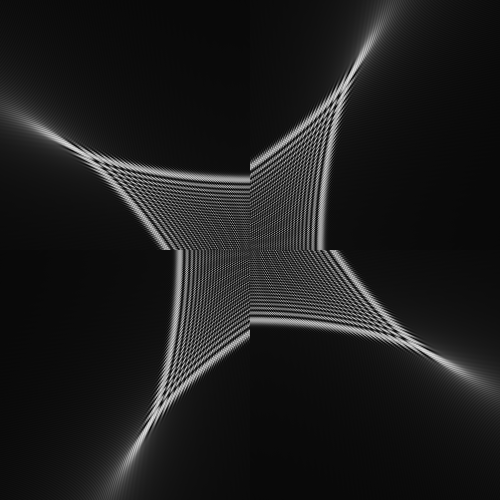
No, this is not something that a gravitational lens would produce. Or any lens.
Even-numbered multipoles in a gravitational lens produce images that have fourfold symmetry. This allows me to reduce the amount of computation needed to generate an image, as I only need to generate one quarter; the rest are just copied over.
But this is not true for odd-numbered multipoles. This image was supposed to represent the J3 multipole, which would yield a triangular shape.
Unfortunately, I generated it accidentally by assuming the symmetries of an even-numbered multipole.
I kind of like the result, even though it is of course scientifically worthless. It still looks neat though.
I was recently interviewed by a Hungarian podcaster, mostly about my participation in the early days of game development in Hungary, but also about my more recent work, including my scientific contributions.
I just listened to the interview and thankfully, I didn’t say anything colossally stupid.
A very nice article about our work on the Solar Gravitational Lens was published a few days ago on Universe Today, on account of our recent preprint, which shows quantitative results assessing the impact of image reconstruction on signal and noise.
Because the SGL is such an imperfect lens, the noise penalty is substantial. However, as it turns out, it is much reduced when the projected image area is large, such as when an exoplanet in a nearby star system is targeted.
While this is good news, the Sun’s gravitational field has other imperfections. We are currently working on modeling these and assessing their impact on noise. Next comes the problem of imaging a moving target: an exoplanet that spins, which is illuminated from varying directions, and which may have varying surface features (clouds, vegetation, etc.) Accounting for all these effects is essential if we wish to translate basic theory into sound scientific and engineering requirements.
So, the fun continues. For now, it was nice to see this piece in Universe Today.
According to the immortal Douglas Adams, God’s final message to His creation is simple: “We apologize for the inconvenience.”
But there’s also another final message of sorts, the answer to the Ultimate Question about Life, Universe, and Everything: 42.
Recently, a researcher by the name of Michael Hippke analyzed the seemingly random bits that are contained in minute fluctuations of the Cosmic Microwave Background (CMB) radiation. His conclusion: there is no discernible pattern, no appearance of constants of nature, no detectable statistical autocorrelation. The message is random.
I beg to respectfully disagree. In the 512-bit segment published by Hippke, the bit sequence 101010 appears no fewer than eight, er, nine times (one occurrence split between two lines).
Now if we only knew the question to which the answer is 42…
The giant Arecibo radio telescope is no more.

Damaged by a broken cable just a few weeks ago, the telescope completely collapsed today.
Incredibly sad news.
Completed in 1963, the telescope was 57 years old, just like me. I hope I will last a few more years, though.
Since when is listening to the scientists a bad thing?
Trump complains if Biden is elected, “He’ll listen to the scientists.”
Wait. Is that a bad thing?pic.twitter.com/YIqHER6SJW
— Keith Boykin (@keithboykin) October 19, 2020
Now as to the claim that if he listened to the scientists, he’d have tanked the economy… here is what Mr. Trump’s pandemic response accomplished with respect to the US economy:
Compare this against China, where the totalitarian government, to their credit, actually listened to the scientists:
Even Canada, with a much less spectacular pre-pandemic economic performance than the United States, fared much better than our southern neighbor on which much of our economy depends:
So I suppose, Mr. Trump, you just gave millions of thinking Americans another reason to vote for Mr. Biden. I’d laugh but… neither the state of the US economy nor the number of dead, rapidly approaching a quarter million, qualify as laughing matter. Not to mention the seemingly inevitable march towards an increasingly illiberal, increasingly authoritarian America, driven by structural causes that go back decades and which a Biden Administration is just as unlikely to address as preceding administrations.
Tonight, Slava Turyshev sent me a link to an article that was actually published three months ago on medium.com but until now, escaped our attention.
It is a very nice summary of the work that we have been doing on the Solar Gravitational Lens to date.
It really captures the essence of our work and the challenges that we have been looking at.
And there is so much more to do! Countless more things to tackle: image reconstruction of a moving target, imperfections of the solar gravitational field, precision of navigation… not to mention the simple, basic challenge of attempting a deep space mission to a distance four times greater than anything to date, lasting several decades.
Yes, it can be done. No it’s not easy. But it’s a worthy challenge.
One thing follows another…
I’m listening to old MP3 files on my computer, one of which contains this once popular song by Paper Lace, The Night Chicago Died.
I once read that the band knew nothing about Chicago’s geography; I checked again on the Wikipedia page dedicated to this song.
The page mentions, among other things, how then Chicago mayor Daley hated the song. Daley? The same Daley who demolished Meigs Field airport, the island airport serving downtown Chicago that was the starting location of Microsoft Flight Simulator for many years?
Indeed. (Well, almost. There were two Daleys, father and son, Richard J and Richard M.) And Wikipedia tells me that the island has indeed since been turned into a park and nature preserve. But there are few pictures, so I figured I’d check it out using Google Maps.
So I typed Chicago into Google Maps and was greeted with this message in response:

I don’t know but this seems… a tad embarrassing isn’t it. Unless of course Chicago actually did die last night, and was promptly removed from Google Maps in response.
But no, Chicago is still there. The Google Maps thing was just a glitch. As is Northerly Island, which once hosted that ill-fated airport, its future as uncertain as it has always been in the past century or so.
A popular Internet meme these days is to present an arithmetic expression like, say, 6/3(4−2) and ask the poor souls who follow you to decide the right answer. Soon there will be two camps, each convinced that they know the truth and that the others are illiterate fools: According to one camp, the answer is 4, whereas the other camp will swear that it has to be 1.
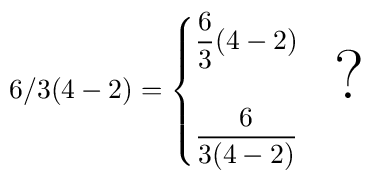
In reality it is neither. Or both. Flip a coin, take your pick. There is no fundamental mathematical truth hidden here. It all boils down to human conventions. The standard convention is that multiplication and division have the same precedence and are evaluated from left to right: So 6/3×(4−2) is pretty unambiguous. But there is another, unwritten convention that when the multiplication sign is omitted, the implied multiplication is assumed to have a higher precedence.
Precisely because of these ambiguities, when you see actual professionals, mathematicians or physicists, write down an expression like this, they opt for clarity: they write, say, (6/3)(4−2) or 6/[3(4−2)] precisely so as to avoid any misunderstanding. Or better yet, they use proper math typesetting software such as LaTeX and write 2D formulas.
